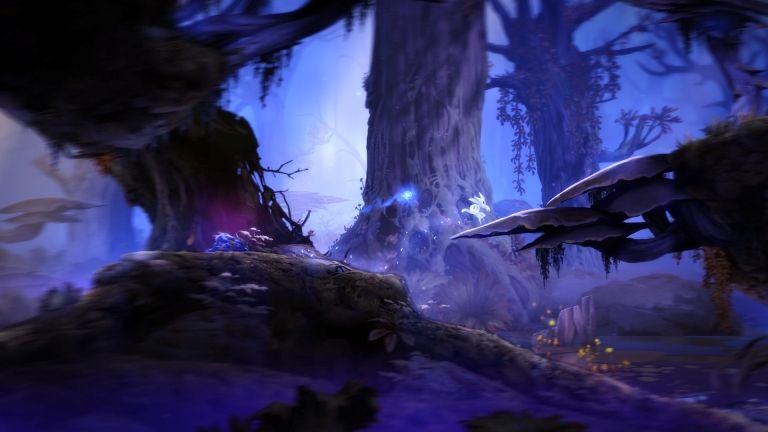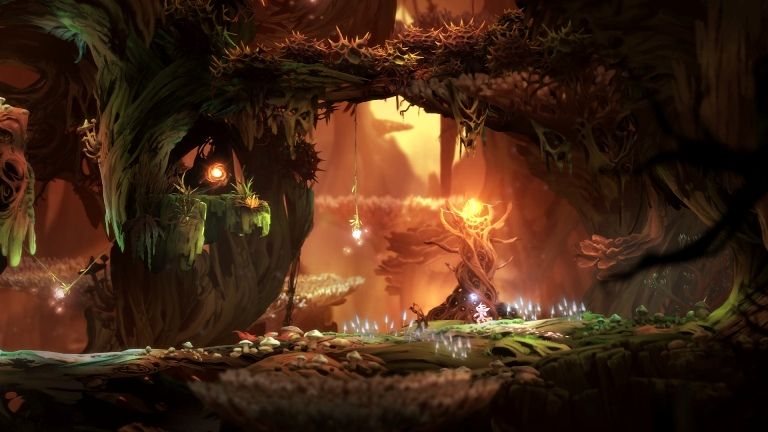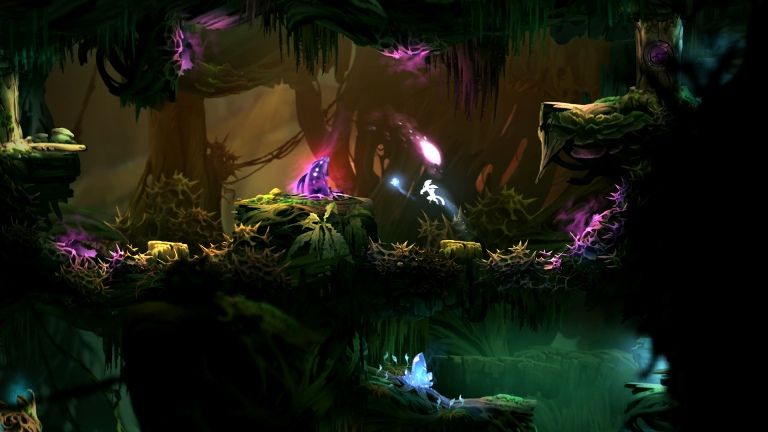Ori and the Blind Forest made a stunning debut during Microsoft’s E3 2014 press event with its gorgeous visuals and sweeping soundtrack. Since then, it seems folks almost forgot about the game before its launch this month. Thankfully, as the critical reception has been all but glowing, gamers have regained interest. While first impressions are made off its gorgeous visuals, players will be happy to know that more goes on underneath that beautiful exterior. It boasts Metroidvania style gameplay along with increasingly unrelenting platforming segments at its core, but unlike so many 2D platformers focused purely on style, there’s a serious amount of substance for Ori and the Blind Forest players to discover.
Although there’s much more to Ori than its visuals, they’re the first thing everyone sees - and can’t take their eyes off. Yes, Ori and the Blind Forest is easily on of the most charming, radiant games out there today as far as graphics are concerned. It has the skillful artistry of a Studio Ghibli film alongside an incredibly crisp 1080p resolution. Every tree rustle reveals subtle leaf movement, and heck, every hand-painted backdrop looks just as incredible as the next. There's so much detail in each that it's hard not to stop and stare a while before proceeding along. Characters themselves, such as our tiny protagonist named Ori, are animated with the utmost care. It seriously looks as though the game is more animated film than something players actually control.
In many ways, the bewitching visuals actually might confuse players as to how the game will proceed. We’re treated to a lovely bit of wordless storytelling during the twenty or so minute introduction. It’s surprisingly emotional and gameplay is quite sparse - simply walk left or right a little and make some basic jumps. Despite the cinematic feel and family-friendly image of Ori and company, however, this is an incredibly difficult game. Folks expecting the similar low impact gaming of some other visual powerhouse platformers will be in for a rude awakening. Gameplay does start out fairly easy but quickly escalates in difficulty, requiring players to do frighteningly specific (and sometimes frustrating) platforming moves. A few action sequences in particular are reviled by otherwise devout fans.
Cute, cuddly Ori begins as a real weakling. Equipped with only a single jump and lock-on attack which can only hit one enemy at a time, there’s little creativity for players to employ. It’s not long, however, before the game includes players with new skills. The storyline is always pushing players to complete the next task -- which sometimes bestows an awesome skill. As is expected with the Metroidvania genre, though, you'll always want to check other areas and discover something new.Many areas which are blocked off early on can be returned to with a better skillset.
Then there is the leveling system which allows players to modify Ori along three distinct “paths.” One is focused on increasing power of attacks, for example, while another focuses on passive abilities. Every item on this progression chart is shown from the start meaning you can and should start planning early for what skills fit best for your playstyle.
Ori and the Blind Forest’s difficulty is not simply related to challenging platforming or enemies; one must even contend with its save system. You see, the game isn’t keen on auto saving. Instead, in most instances you must instigate saves yourself utilizing energy. Energy is gathered through breaking crystals and defeating enemies, though sometimes you’ll find yourself without any energy to save at all. Some of Ori’s skills are tied to this same energy resource, meaning there’s a risk/reward system to determining when you should expend energy instead of saving. Get accustomed to saving regularly as otherwise you’ll be in for a painfully frustrating journey.
Demanding games require precise control schemes. In most instances, it feels Ori and the Blind Forest gets this right, but every so often Ori feels sluggish. It may be due to the creature’s momentum, but there were multiple times when it seemed unable to grasp walls or jump as intended. On other occasions, it simply wouldn’t stop grabbing walls when I needed Ori to hurriedly go elsewhere. Thankfully, as the furball powers up further new skills allow players to overcome sometimes spotty controls. A triple jump, for example, proves a savior in otherwise dangerous circumstances.
Closing Comments:
There’s nothing quite as rewarding as a good Metroidvania and Ori and the Blind Forest proves itself to be classified as one. Giant, sprawling landscapes hide tons of goodies just waiting to be collected once you’ve gained some new skills. Gorgeous artwork makes retreading old territory far less monotonous as well. It’s true that Ori could be a bit friendlier to control, but for the most part allows players to traipse around with the utmost grace. It’s rare to see a game with stunning visuals and excellent gameplay, but Ori and the Blind Forest does exactly that. As long as you’re prepared for a serious challenge, then this is one game not to miss.




